 |
||
|
Predictive Maintenance Solutions 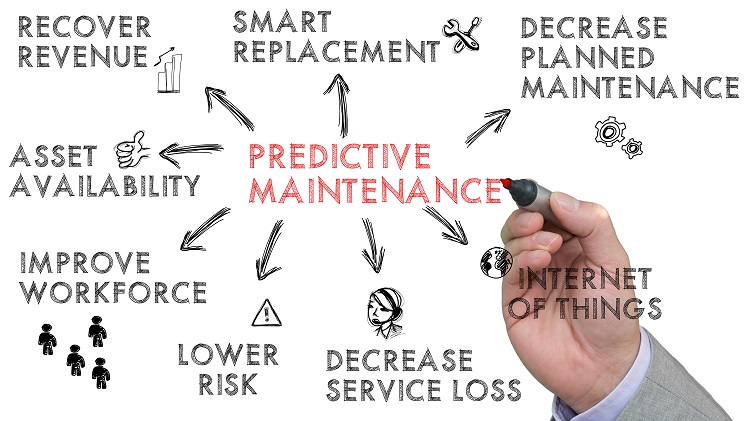
While industrial manufacturers running different types of plants and facilities may have their individual production priorities and focuses, how to maximize the operating life and productivity of their machinery has always been at the core of factory floor management. Because the smooth running of a manufacturing plant is heavily dependent on the proper functionality of its machines, when a machine goes offline due to an unexpected malfunction or breakdown, it can lead to equipment shutdown and disruptions to normal operations, costing organizations tremendous downtime and losses. It is why plant managers need an effective maintenance approach to help discover and fix issues promptly before they develop into actual failures. Implementing the right maintenance program allows manufacturers to make sure that their factory assets stay in perfect health and are running at their best to retain optimum output capacity, saving on both costly unplanned downtime and repairs. Challenges of Preventive Maintenance Traditionally, preventive maintenance has been the most common plant maintenance strategy, a time-based approach that is regularly performed at specified time intervals—typically through scheduled examinations and servicing of machines, as well as periodical replacement of spare parts. Although scheduled preventive maintenance can help avoid unexpected machine failures, this strategy almost always causes undesirable downtime and interruptions of machine operations, and does little to reduce maintenance costs for labor and parts. By keeping to a set schedule based on theoretical estimates of failure, rather than on actual equipment status or performance, the preventive maintenance approach can result in performing inspections on equipment that are still working and might not necessarily require maintenance. Additionally, executing scheduled maintenance requires equipment to shut down and go offline on a regular basis, inevitably leading to periodic interruptions to manufacturing operations. Preventive maintenance also involves systematic replacement of components in an attempt to eliminate looming problems caused by faulty parts, but routine part replacements at scheduled intervals often mean the disposal of potentially good components or buildup of spares inventory, consequently increasing replacement costs over time. Introduction to IoT-enabled Predictive Maintenance The predicaments experienced by traditional preventive maintenance have led to the development of Predictive Maintenance (PdM)— an alternative approach that promises to ensure much smoother, uninterrupted running of plant operations at lower costs. Driven by the maturity of the Industrial Internet of Things (IIoT) and Machine Learning technologies in the increasingly connected industrial world, today’s predictive maintenance system has evolved into a highly integrated decision-making platform that is on its way to replacing traditional maintenance methods. Predictive maintenance is a data-driven technique with a primary focus on data acquisition, monitoring and analysis of real-time machinery conditions in order to diagnose problems in a piece of equipment, employing advanced analytics tools to measure and compute equipment performance trends to anticipate when exactly a running machine will fail, so that maintenance can be planned and executed ahead of time. With manufacturing machines and other assets now being able to connect to the Industrial IoT, the PdM system can utilize sensors and gateway controllers to collect real-time data from machines on the factory floor, then send the data over to a remote monitoring station, an enterprise cloud or server to make non-intrusive monitoring possible. Equipment continues running while being monitored—all monitoring and data gathering activities are conducted without interfering with normal machine operation, eliminating the need to shut down for inspection on a periodic basis. With live data constantly flowing from equipment sensors to monitoring computers, maintenance managers can oversee equipment performance remotely and always be informed about signs of equipment health like vibration, temperature, audio frequency or any anomalies to understand what's going on inside complex machinery, and then take necessary measures in response. Enabled by machine learning algorithms, the PdM system will further identify upcoming issues in comparison to historical data and failure patterns to provide accurate predictions for future maintenance needs. Based on the PdM system’s alerts and recommended actions, plant supervisors are able to arrange maintenance only when necessary, significantly reducing the number of machine shutdowns and part replacements, while retaining full capability of conducting timely, adequate servicing tasks based on what’s actually happening to a machine. Through the deployment of a maintenance program based on real-time condition monitoring to replace time-based routine checks, manufacturing plants will have a far greater chance of forecasting and correcting issues before they become unexpected breakdowns. In the meantime, having better control over costs such as labor and part inventory ultimately helps organizations maximize uptime and lifespan of their equipment to boost production output and efficiency. In a nutshell, with predictive maintenance now incorporating Industrial IoT techniques, connected machines will be able to tell factory floor managers that they are going to fail, before they fail. Machine failures can therefore be minimized and significant reductions in downtime be achieved. Benefits of Implementing Predictive Maintenance 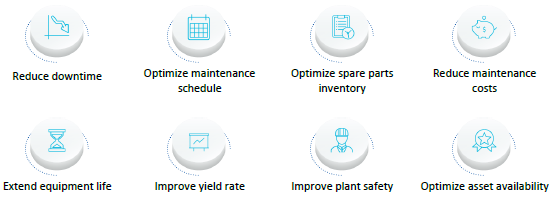
Sensors are installed on equipment and connected to gateways to collect analog signals like voltage, temperature, audio frequency, etc. from equipment in real time.
Gateways process analog signals coming from sensors into digital data, which will be transmitted to a remote computer, server or private cloud to display equipment status for monitoring and analysis purposes. In many cases, gateways with edge computing capabilities serve as translators to calculate and convert raw data into useful forms of information such as graphs or diagrams, making data easier for users, applications or other devices to comprehend. Plant supervisors at a remote monitoring station monitor equipment through display of live streaming data to make sure it is in healthy condition. Since equipment needs to be monitored at all times, the PdM system serves as an effective interface to track and handle equipment conditions at any time from anywhere.
By leveraging software tools available in the cloud, control center staff perform data analytics to build failure prediction models based on existing data, training the PdM system to recognize these failure models as a part of the machine learning process. The PdM will develop the ability to make predictions for future maintenance.
The PdM system compares current equipment/sensor information against benchmark analysis data or machine learning models to find patterns and predict possible failures. Plant supervisors will be notified to maintain equipment or replace components, or are even given suggestions to improve production efficiency.
The PdM system connects with management platforms such as MES, SAP and ERP to help managers generate actionable maintenance or improvement results, such as deploying necessary tasks, preparing spare parts or assigning service technicians. What Axiomtek Offers As one of the leading companies in the Industrial IoT industry, Axiomtek has been providing its customers with highly efficient data gathering solutions, actionable analytics and easier ways to fulfill industry maintenance requirements, enabling predictive maintenance technology to deliver valuable insights for our customers so that they can drive better business decisions. Axiomtek's Industrial IoT Gateways Axiomtek has a comprehensive lineup of Industrial IoT gateway and controller products that come with a low-power consumption Intel® processor and robust edge computing power. Our Industrial IoT gateway devices feature rich I/O communication interfaces, wireless connectivity and expandable designs. They are user-friendly, cost-effective and reliable solutions for smart IIoT applications. Axiomtek's Middleware and SDK Axiomtek’s middleware and software development kit (SDK) have been specially developed for integration into our gateway products to help our customers expedite the deployment process of their predictive maintenance applications. Axiomtek’s well-defined middleware solutions support major programming languages and platforms including Visual Studio, LabVIEW and MATLAB to streamline data acquisition and analytics process, rendering signal values through display of graphics and diagrams for the user to easily identify and analyze unusual equipment events. Axiomtek’s AXView 2.0 is a highly integrated software suite that bundles a complete software development kit (SDK) with a rich library of embedded application programming interfaces (EAPI), which can be employed by customers to develop various software tools and environments to meet the demands of their remote monitoring and management systems. The AXView 2.0 suite also includes a monitoring agent program that is able to watch over local equipment behaviors and issues alerts as indications of anomalies occur, offering visualizations or live data views that make it easy for administrators to track factory floor machines remotely and acquire instant information. AXView is cloud-ready and IoT-enabled, capable of connecting cloud services like Microsoft Azure as well as customers’ private clouds to push aggregated machine data directly to the cloud for storage, sharing, computing, behavior analytics, etc. using available software resources in the cloud.
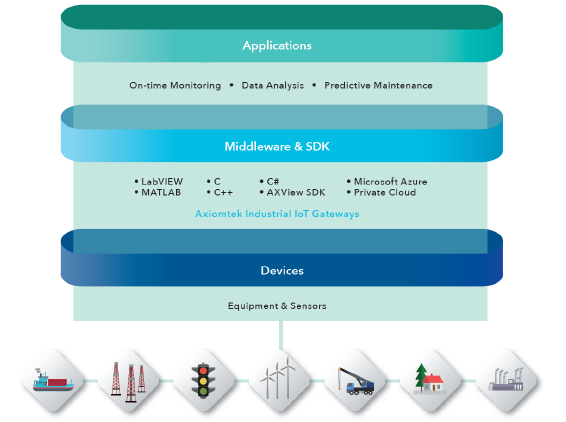
Application Case: Steel Plant Operations In the metalworking industry, "rolling" is a necessary process for metal forming. A rolling mill plays a pivotal role in the process of influencing metal production quality. The factors that can affect the operations of a rolling mill include vibration, balancing, bearing smoothness, lubricating oil temperature and the pressure of the oil hydraulic press. Predictive maintenance is key to maximizing uptime and increased efficiency. During a rolling mill operation, the PdM system collects and monitors data from the sensors mounted onto a rolling mill, which can include accelerometers, thermometers and pressure gauges. By reading and analyzing data from the sensors, users can ensure that the mill’s operation is optimized and potential failures are prevented. The machine learning algorithm can offer a way to improve efficiency and product quality. Recommended Solutions The eBOX800-841-FL is a fanless embedded system with IP67-rated protection to withstand dust ingress and water immersion, particularly suitable for mission-critical applications in austere outdoor environments and manufacturing plants. The rugged embedded system is designed for fanless operation at temperatures from -30°C to 60°C, featuring 9-36V wide range DC input with various power protection designs, M12 lockable connectors and N-jack waterproof antenna connectors to meet the performance needs for Industrial Internet of Things (IIoT) applications. The eBOX800-841-FL is powered by the onboard quad-core Intel® Atom® E3845 processor (formally codename: Bay Trail). This hardened embedded box PC comes with one DDR3L SO-DIMM slot with system memory up to 8 GB. Additionally, one 2.5” SATA HDD, one mSATA and one CFast™ are available for maintaining sufficient storage.
Rugged IP67-rated Fanless Embedded System M801 The M801 accelerometer analog input module can be installed on the eBOX800-841-FL to enable the system to process and translate dynamic signals coming from accelerometers.
High-resolution Accelerometer Analog Input Module Diagram of eBOX800-841-FL application in steel plant operations 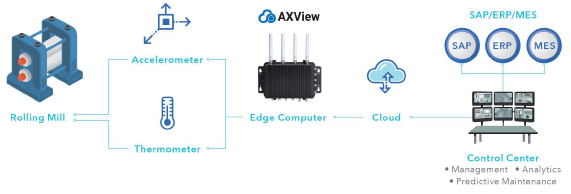 Application Case: CNC Machine Operations Computer numerical control (CNC) is an automation of machine tools using computers to control machine commands. CNC Machine is used for precision machining processes such as cutting, sanding and drilling. Tools that can be controlled by the CNC process include mills, lathes and grinders. Predictive maintenance of CNC machines involves the collection of data via the use of sensors to review a variety of machine elements such as balance of platforms, damage to bearing, wear levels of drills, etc. By reading data sent by the sensors, users can access the operational conditions of the CNC machine. The back-end platform of the PdM system evaluates which part of the machine needs to be maintained or repaired, and then provides maintenance recommendations for advanced maintenance required or replacement of the affected parts. Recommended Solutions Axiomtek’s IRU152 and IRU151 DIN-rail fanless embedded systems utilize a low power RISC-based (i.MX 6UL) processor, one RS-232/422/485 serial port, one LAN, two digital input channels, two digital output channels and four analog input channels, designed to withstand temperatures ranging from -40°C to +70°C for applications in extreme operating environments and industrial automation. The IRU152 and IRU151 are Ethernet-based gateways supporting two wireless sockets (Wi-Fi, 3G/4G or LoRa), acting as a simple transparent interface between Ethernet-based networks and Modbus devices such as meters, monitors and other devices that communicate using Modbus protocol. Also, the IRU152 and IRU151 can record digital/analog signals from devices, control digital devices and share data with administrator computers via wireless connections (LoRa and Wi-Fi), offering a simple, scalable web-based monitoring solution that provides real-time data views, on-board data logging/trending, diagram generation, as well as simple control over Modbus devices. The IRU152 and IRU151 are specially designed for remote control/monitoring management applications, ideal for deployment in an unmanned control room, an industrial machine, an automatic parking lot and a traffic cabinet, just to name a few. 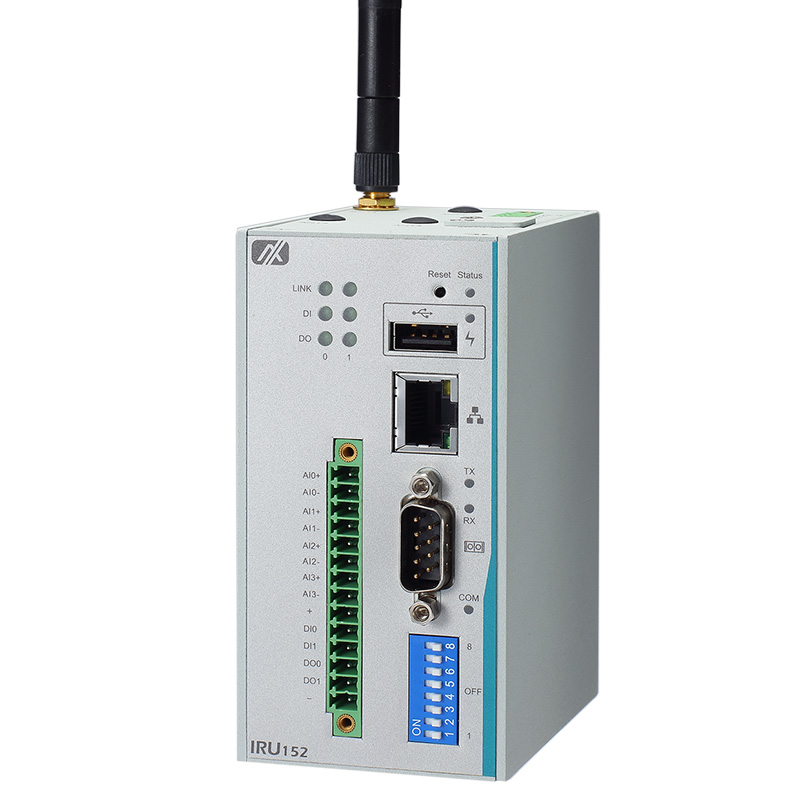
IRU152 Highlights RISC-based DIN-rail Fanless Embedded System 
IRU151 Highlights RISC-based DIN-rail Fanless Embedded System Diagram of IRU152/IRU151 application in CNC machine operations 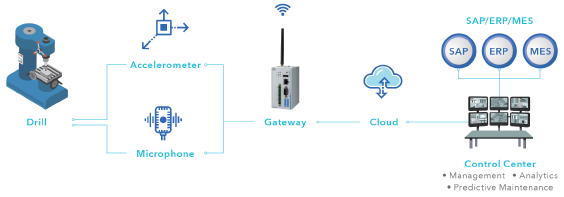 Application Case: Robotic Arm Management A robotic arm is a mechanical arm designed to simulate the functions of a human arm. It can be programmed to accurately perform different combinations of motions carried out by a robotic arm's joints and bearings such as rotating, shifting, and gripping. A variety of robotic arm motions must be monitored, calibrated and adjusted for the accuracy of movements. The PdM system can help prevent costly loss of productivity from unexpected machine breakdowns through the use of sensors attached to the arm. They can detect vibrations, jitters and other deviations from the normal machine's standards and allow for advanced maintenance and uninterrupted operations. Recommended Solutions The IPC962-511-FL, a robust industrial PC powered by the 7th/6th generation Intel® Core™ and Celeron® processors (codename: Kaby Lake/Skylake) up to 35 W with the Intel® H110 chipset, is specifically built to deliver high performance capabilities for data acquisition demands. This ultra-compact, ruggedized industrial computer can withstand a broad operating temperature range of -10°C to +60°C, and is equipped with a wide range 19V - 30V DC power input for mission-critical environments. It has an innovative modular design with rugged mechanism and optimized expandability, providing an optional I/O module slot with three different types of I/O modules that can be installed to suit individual data connection and signal collection needs. The I/O module choices include a 4-port isolated RS-232/422/485 module, an isolated 8-in/8-out DIO module, and a 2-port isolated RS-232/422/485 and 4-in/4-out DIO module. Additionally, the IPC962-511-FL provides two flexible PCI/PCIe expansion slots with three different expansion kits: one PCIe x16 and one PCIe x4; one PCIe x16 and one PCI; and two PCIs. The IPC962-511-FL can be run on the Windows® 10 operating system and supports Axiomtek’s exclusive AXView software for smart device monitoring and remote management. The full integration of hardware and software makes the IPC962-511-FL an excellent IIoT solution for predictive maintenance implementation in robotic arm applications.
2-slot Fanless Barebone System AX92340 The AX92340 analog input card can be installed on the IPC962-511-FL to enable the computer to measure voltage signals. It provides 16 analog input channels with sampling rate up to 250 ksps and 16-bit resolution for the PCI Express bus.
Analog Input Card  Design Assistance and Engineering Services Axiomtek’s design assistance and value-added service teams have years of experience in successfully assisting automation industry customers with their critical project needs, providing overall project support or task-specific assistance during development, testing, deployment and post-deployment phases. Axiomtek’s capable and experienced teams, which include hardware, software and application professionals, can deliver what is needed, when it is needed and with the highest quality available that is known to exceed customer expectations. About Axiomtek Co., Ltd. As one of the world’s leading designers and manufacturers of PC-based industrial computer products, Axiomtek specializes in data acquisitions and control systems of rich diversity and modularization. With the upmost enthusiasm in serving their customers, Axiomtek has mirrored PC evolutions in various industries by shifting its focus toward the design and manufacture of PC-based industrial automation solutions, standing as a trustworthy long-term provider of industrial computers. Established in 1990, Axiomtek has partnered with more than 60 distributors globally, offering more than 400 products through product lines of Industrial PCs (IPCs), Single Board Computers (SBCs), System on Modules (SoMs), Fanless and Rugged Embedded Systems (eBOX and rBOX), Intelligent Transportation Systems (tBOX), Industrial IoT Gateway, Industrial Firewall, Touch Panel Computers (TPCs), Medical Panel Computers (MPCs), Digital Signage Solutions (DSSs), Network Appliances (NAs) and Industrial Ethernet products. As an associate member of the Intel® Internet of Things Solutions Alliance, Axiomtek continuously develops and delivers cutting edge solutions based on the latest Intel® platforms. |
||
| www.axiomtek.com |
Copyright 2020 Axiomtek Co., Ltd. All Rights Reserved
|
|
 1. Connecting equipment & sensors
1. Connecting equipment & sensors  2. Streaming real-time data via gateways for on-time monitoring
2. Streaming real-time data via gateways for on-time monitoring 3. Building failure models via machine learning algorithms
3. Building failure models via machine learning algorithms 4. Giving maintenance alerts
4. Giving maintenance alerts 5. Linking decision management
5. Linking decision management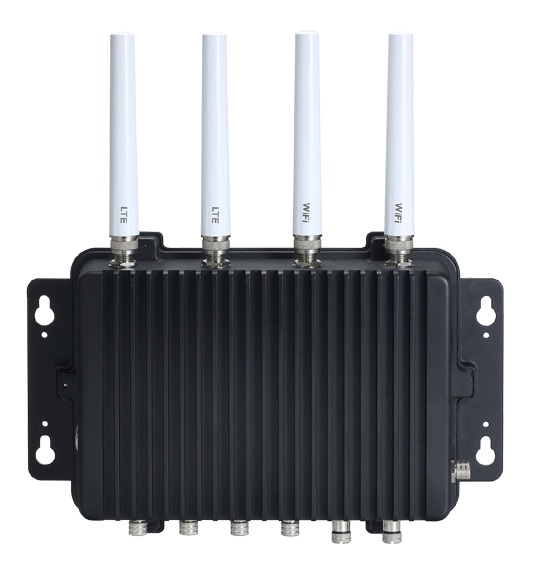
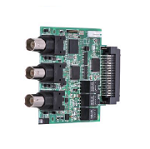 M801 Highlights
M801 Highlights.jpg) IPC962-511-FL Highlights
IPC962-511-FL Highlights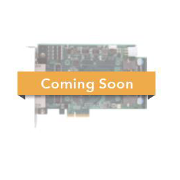 AX92340 Highlights
AX92340 Highlights